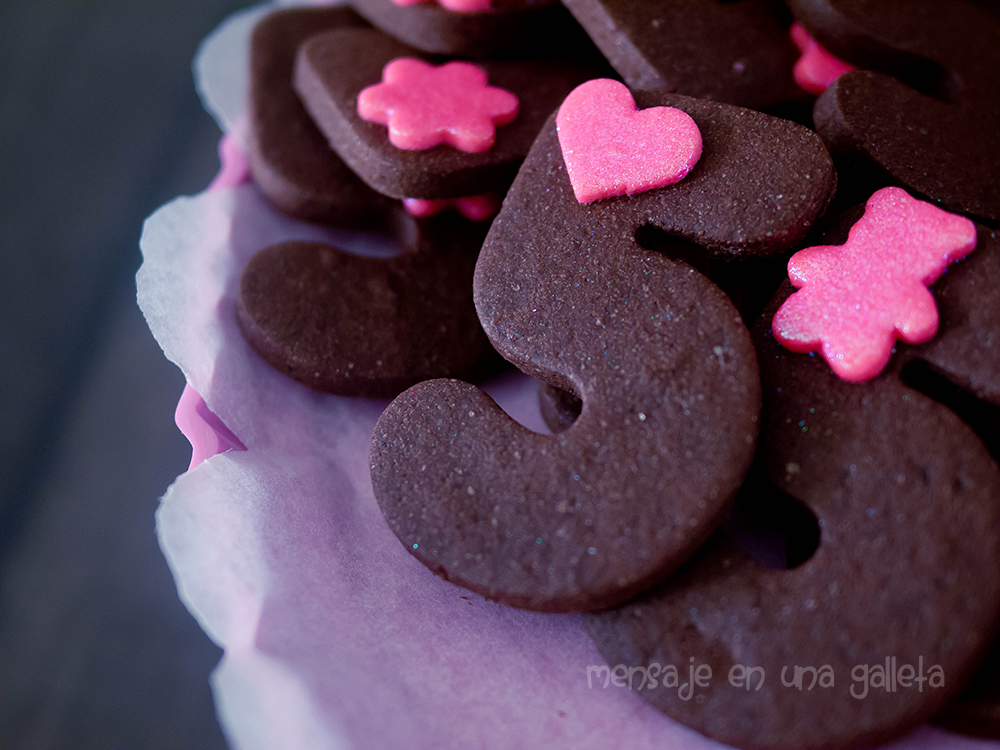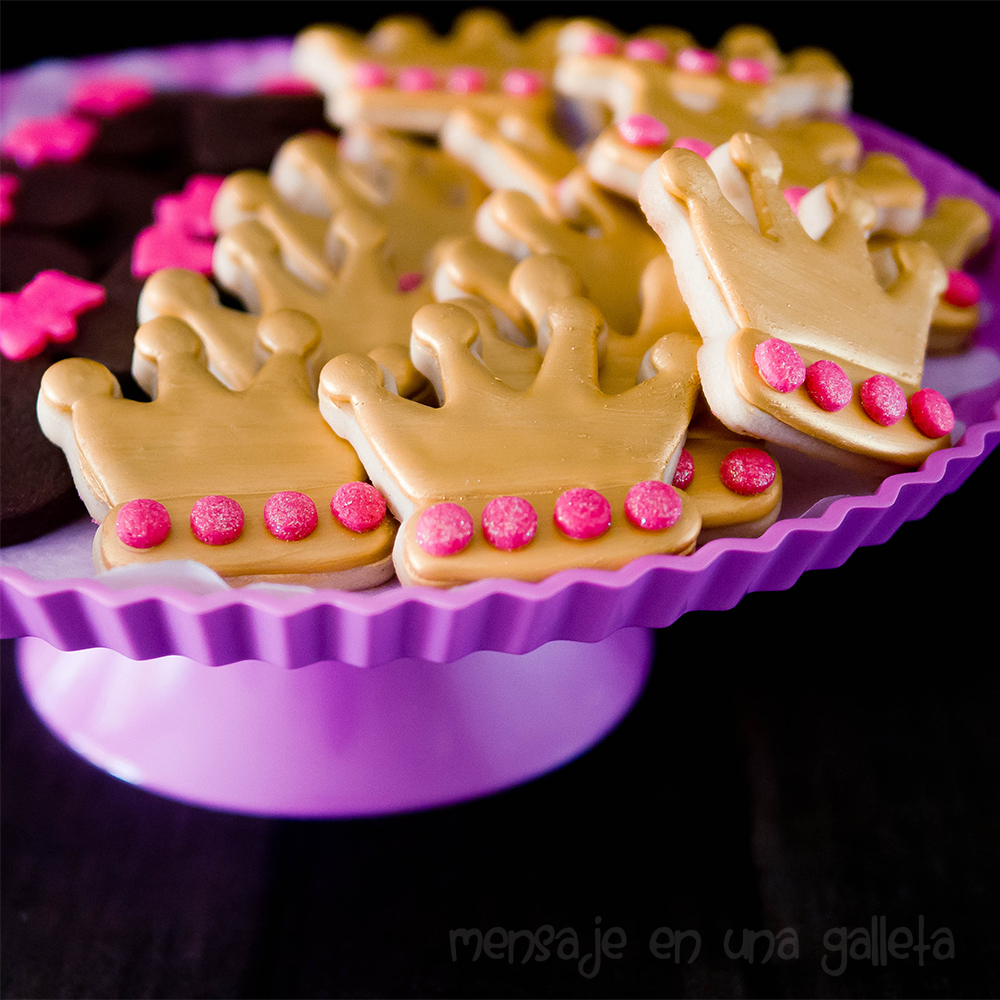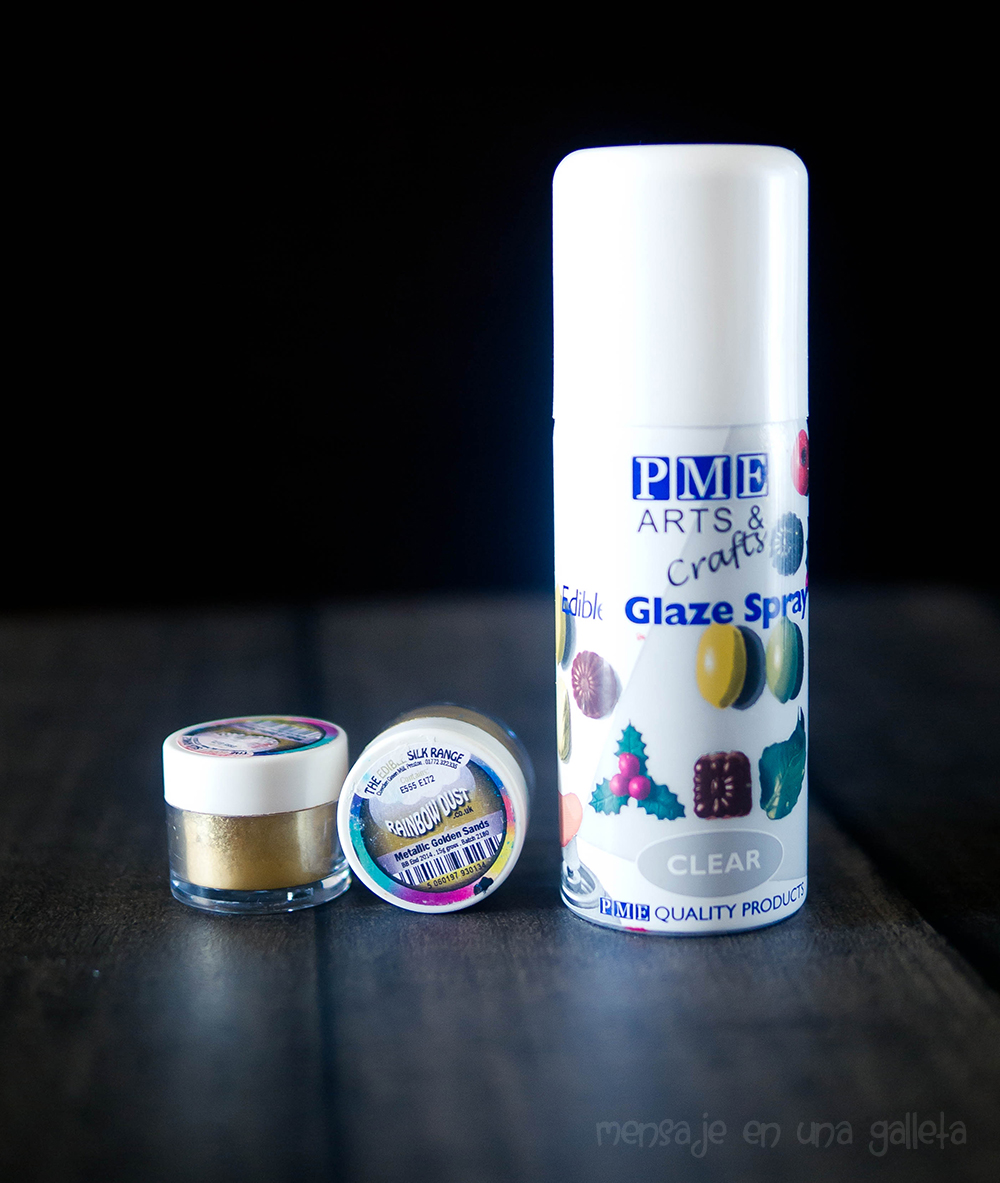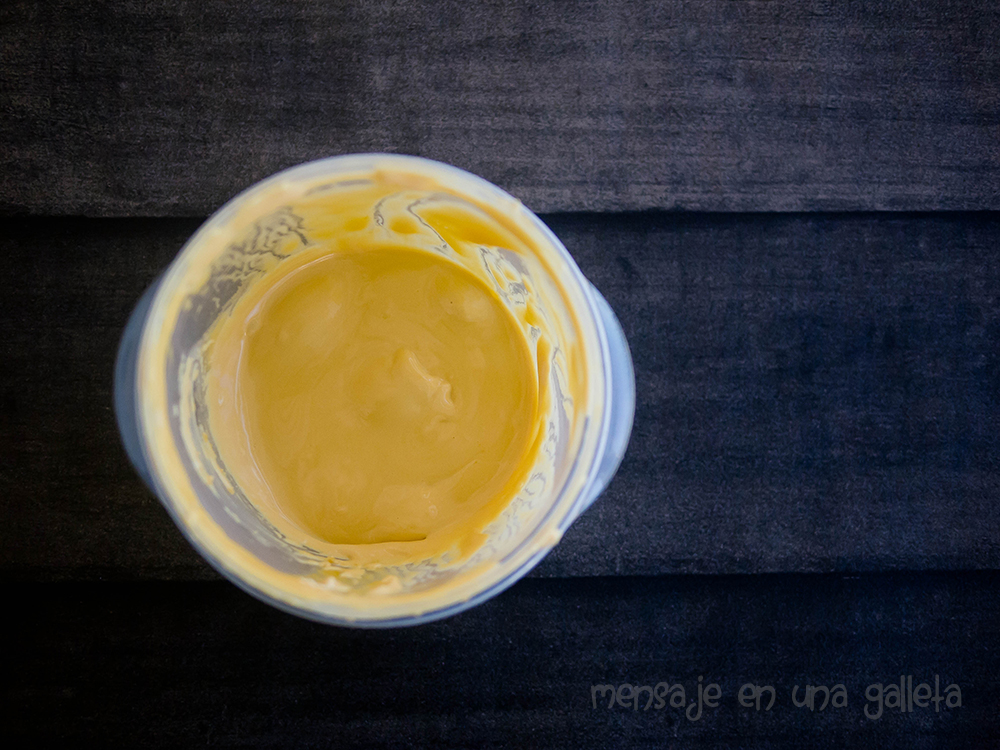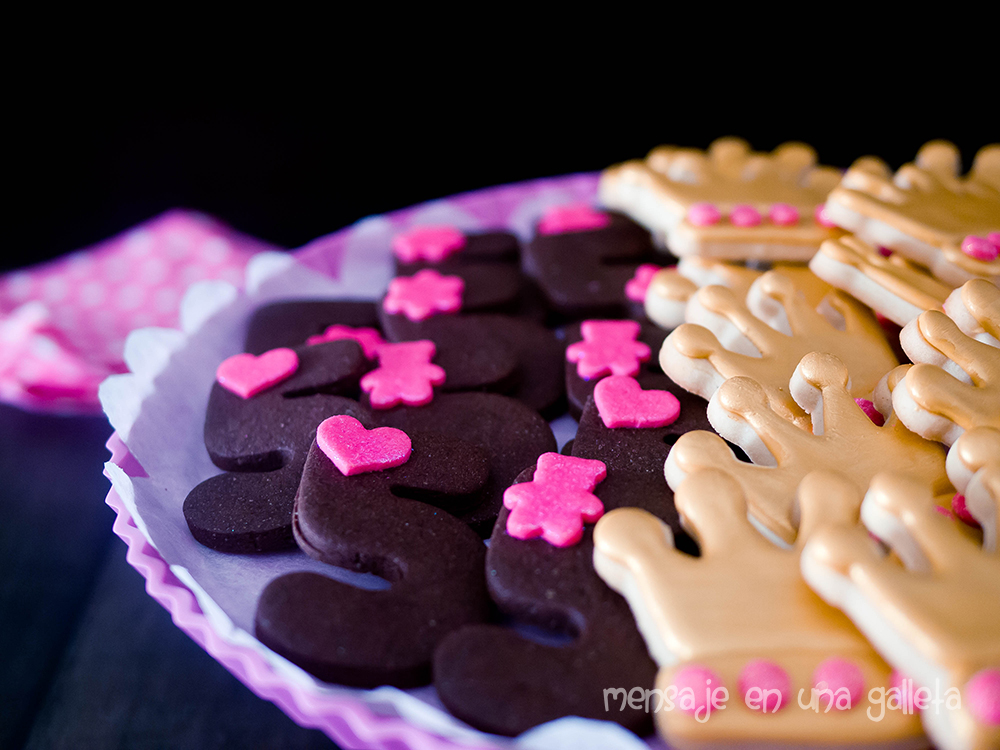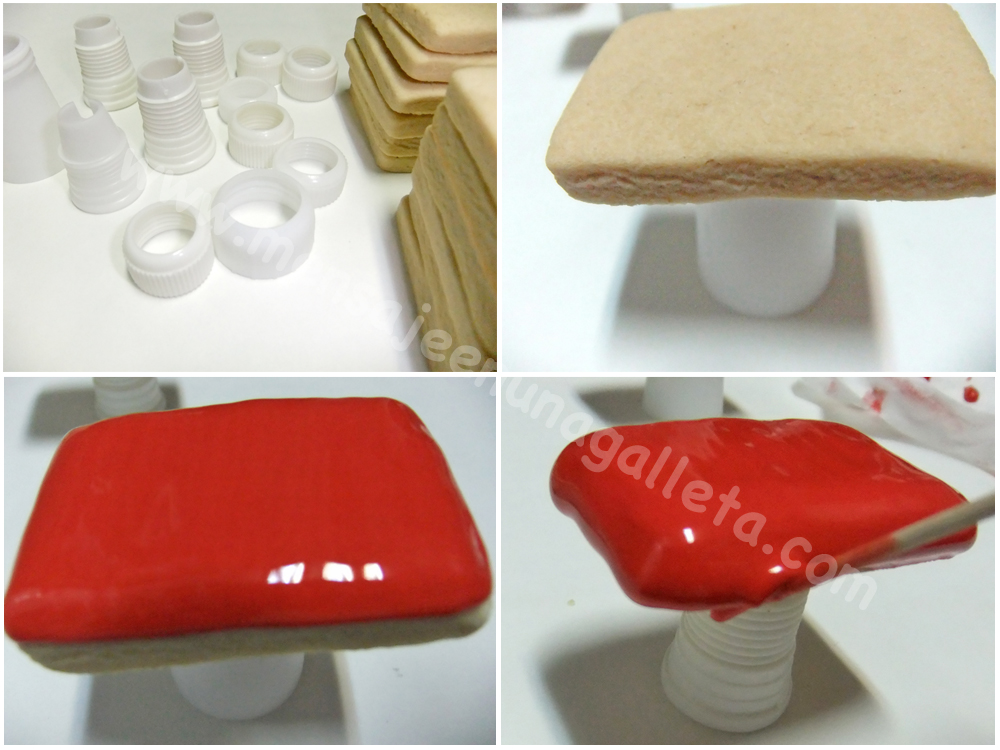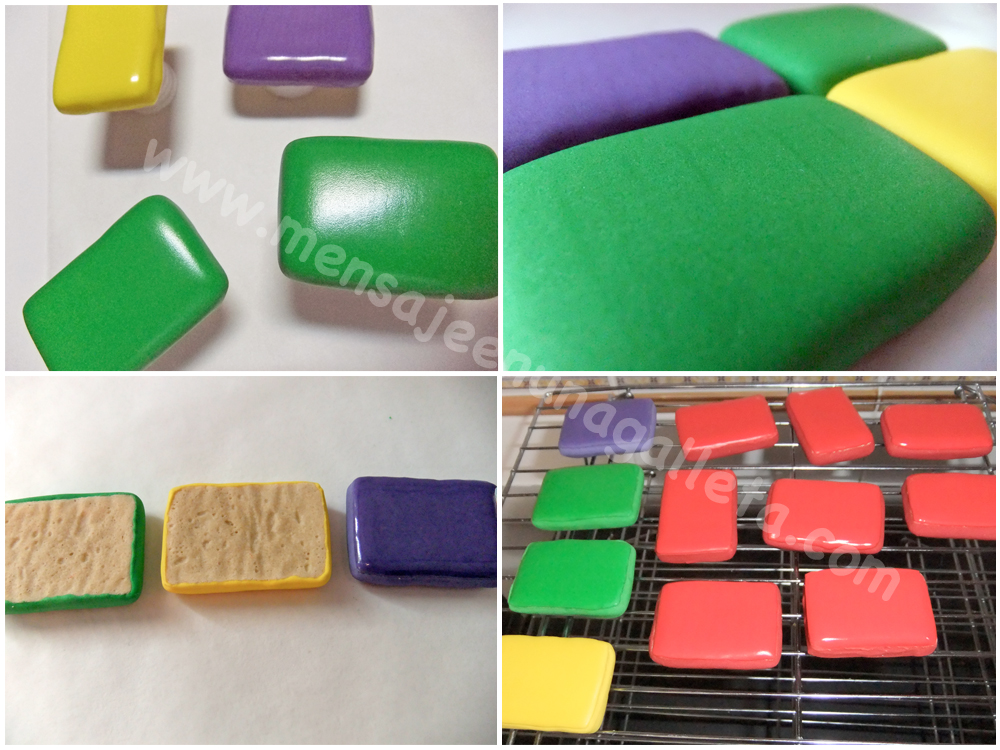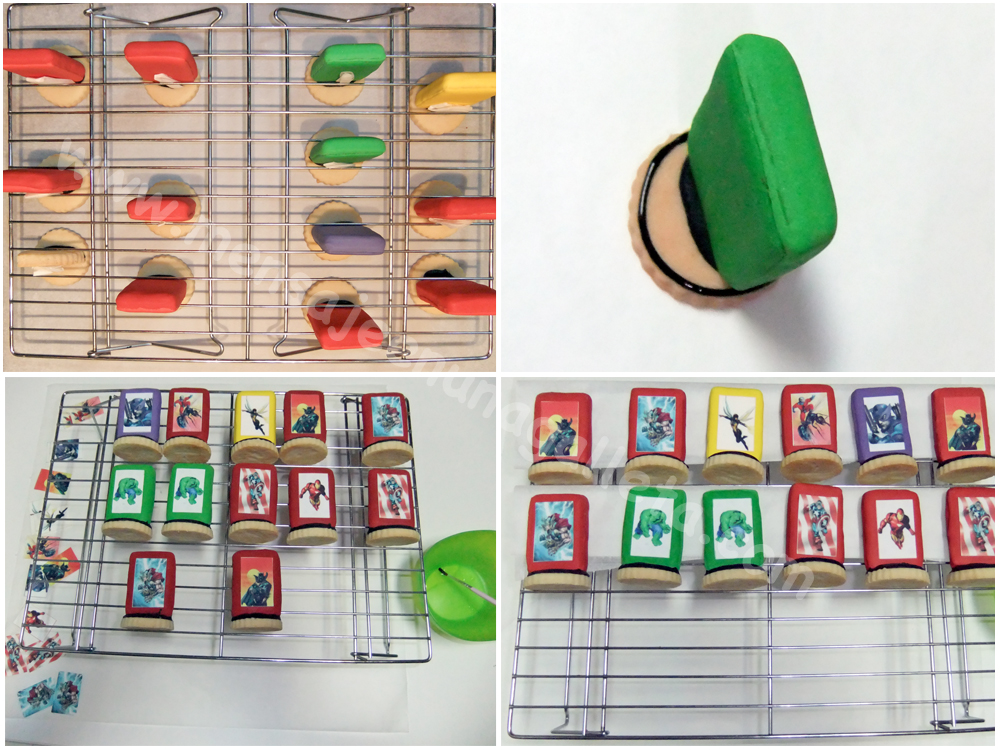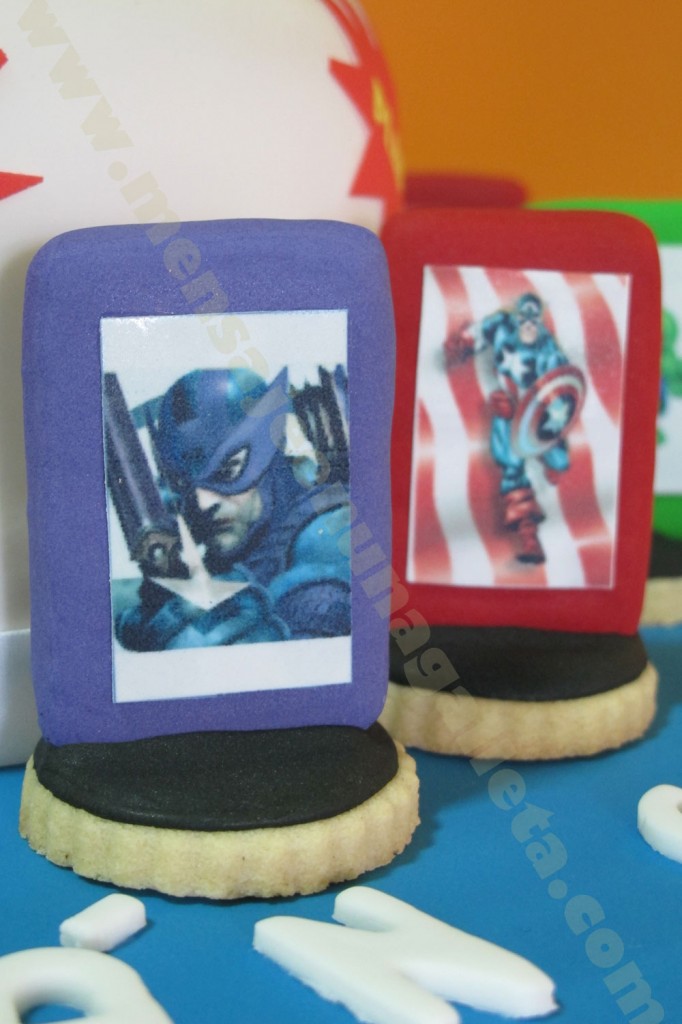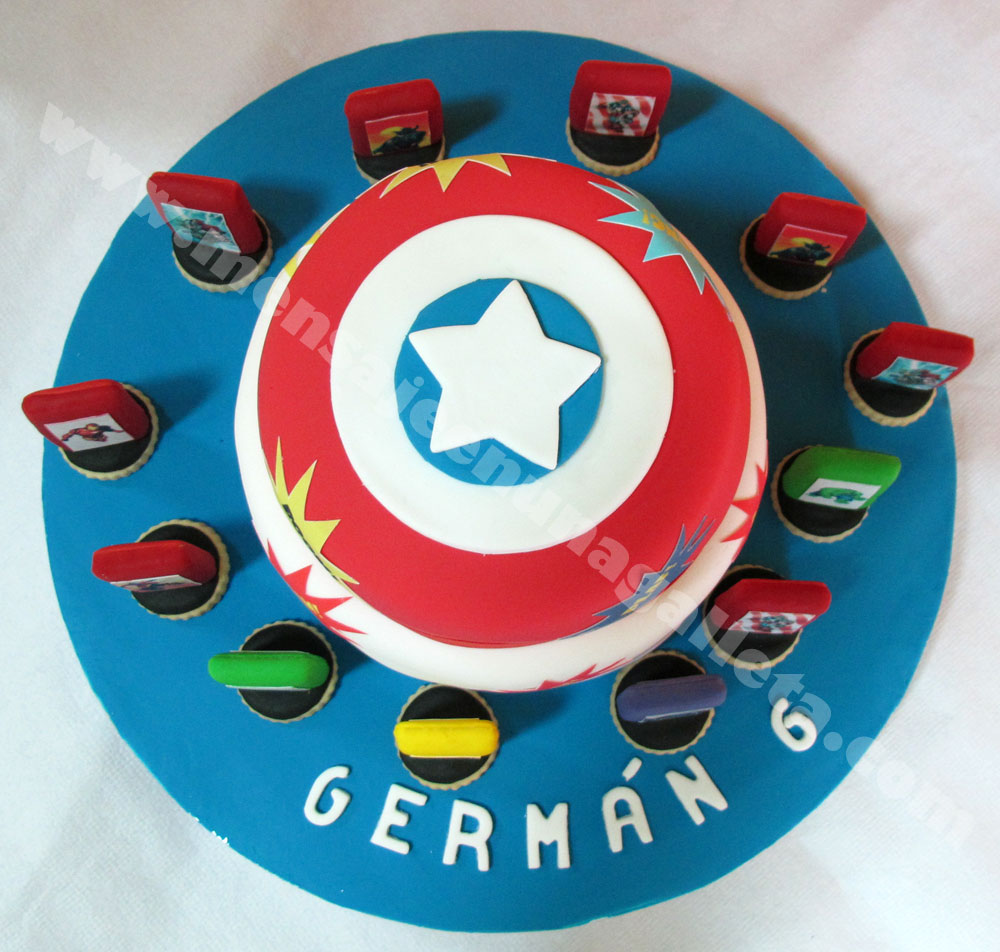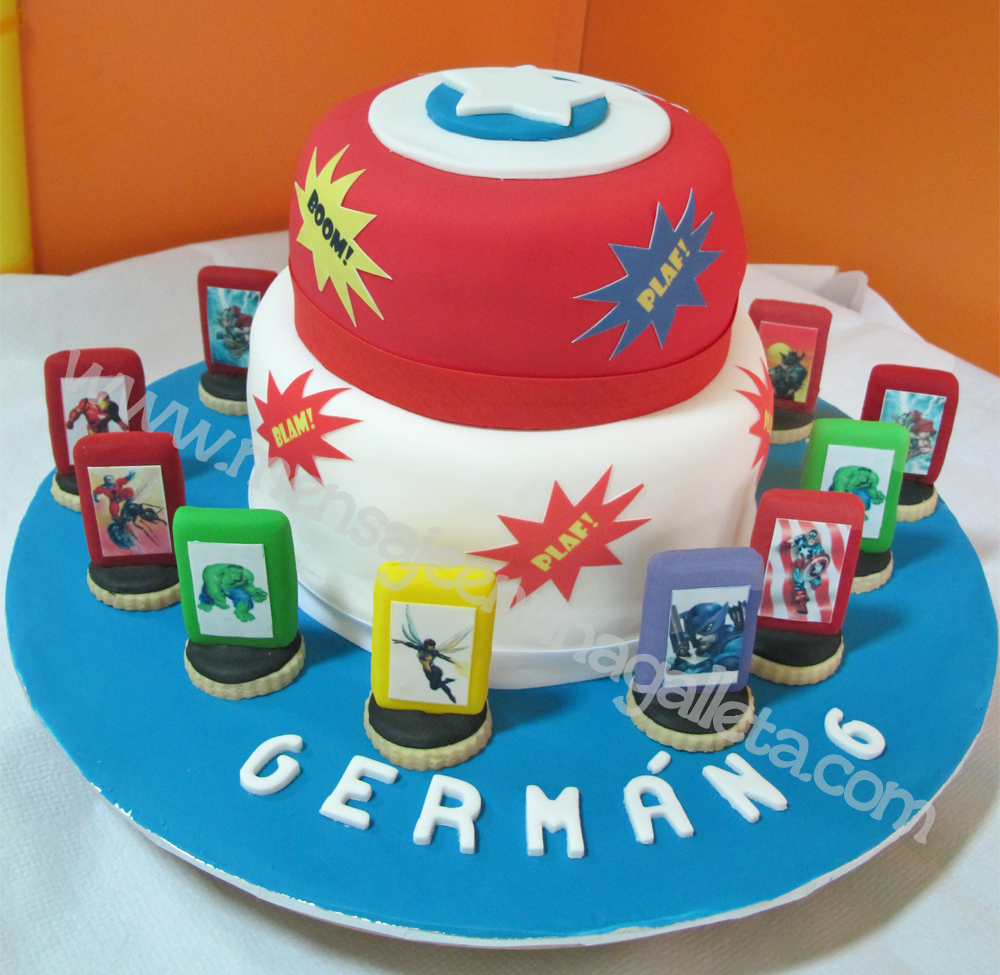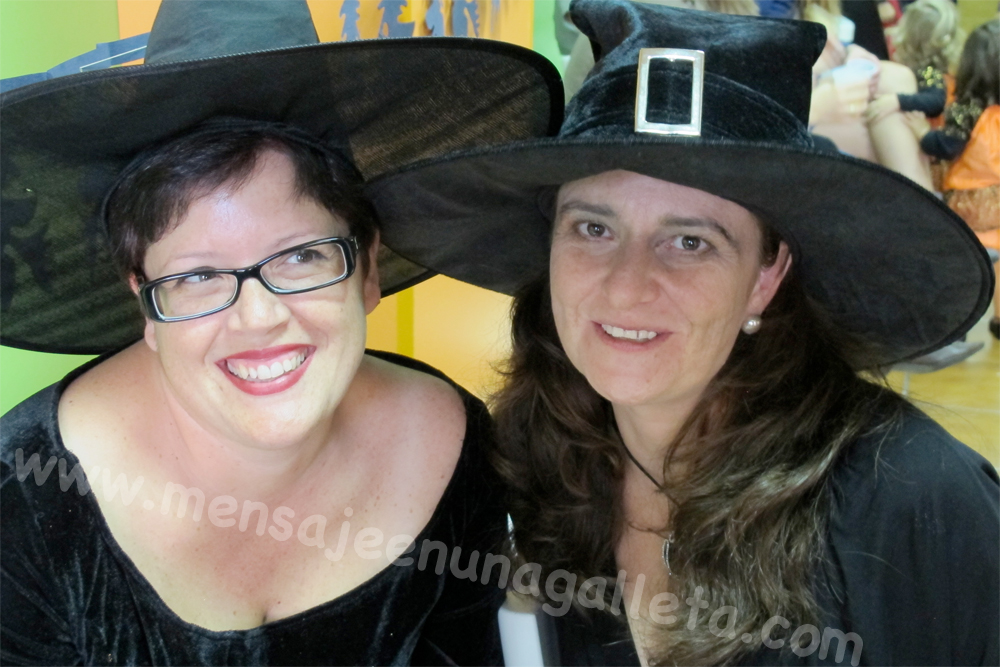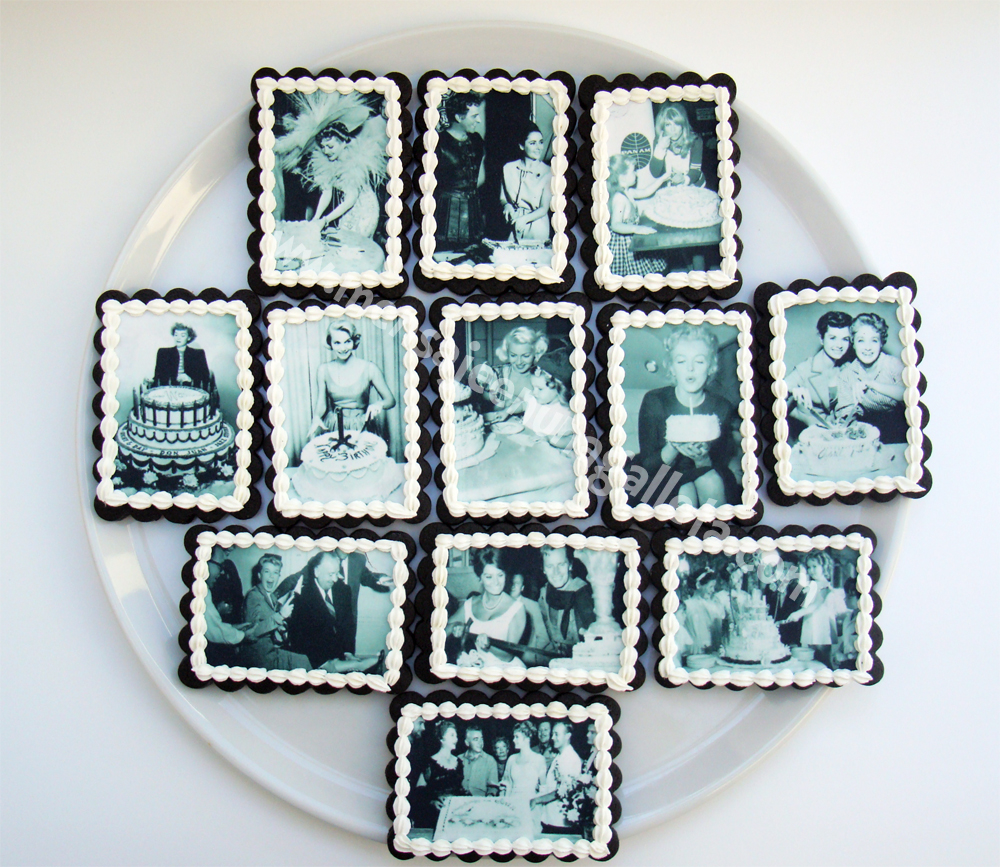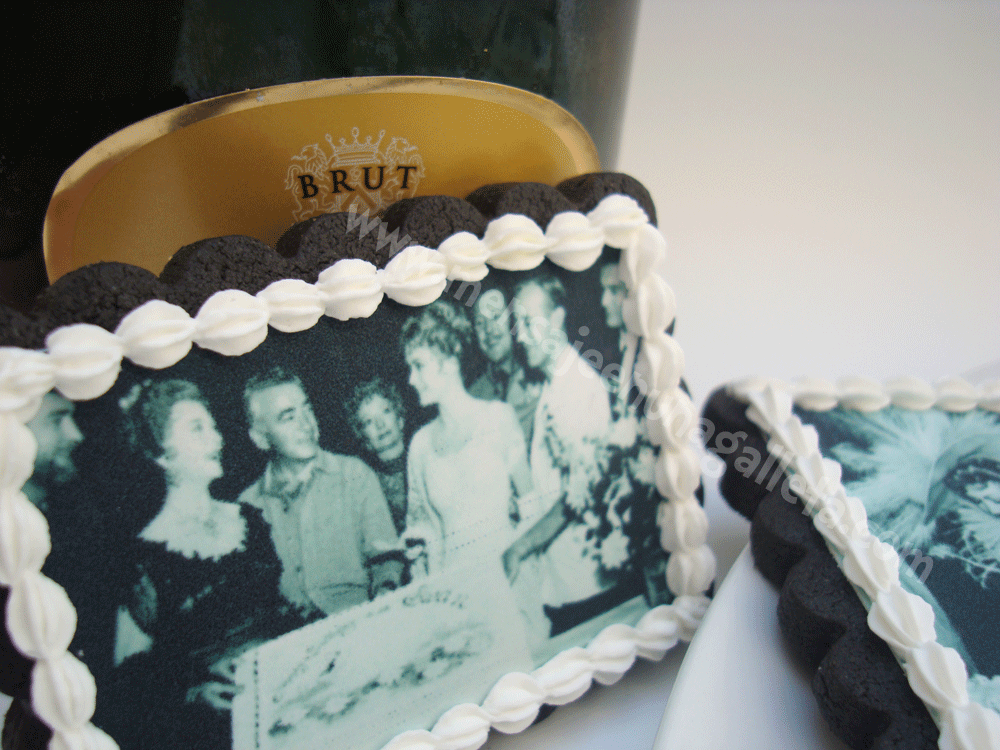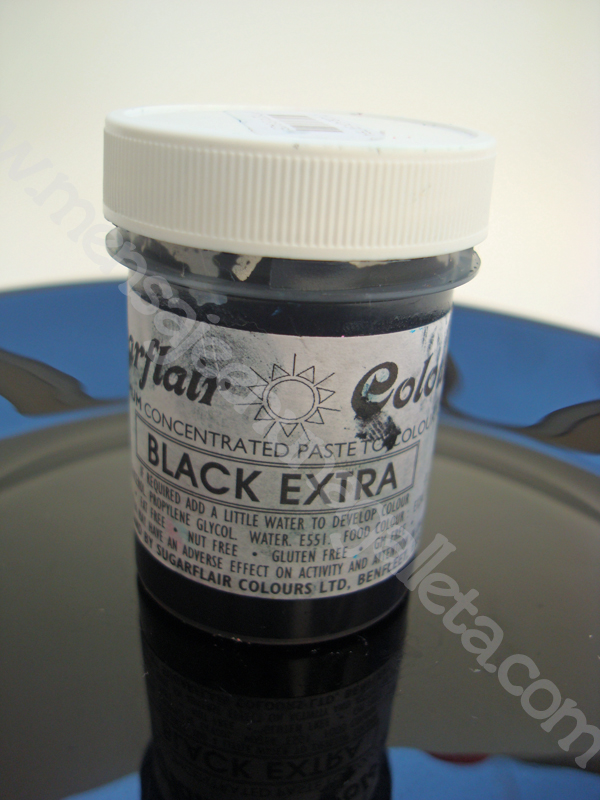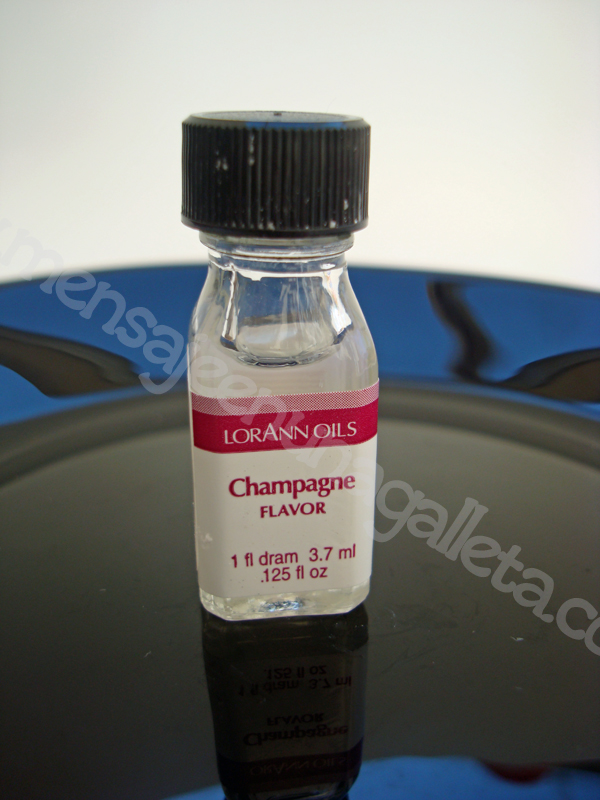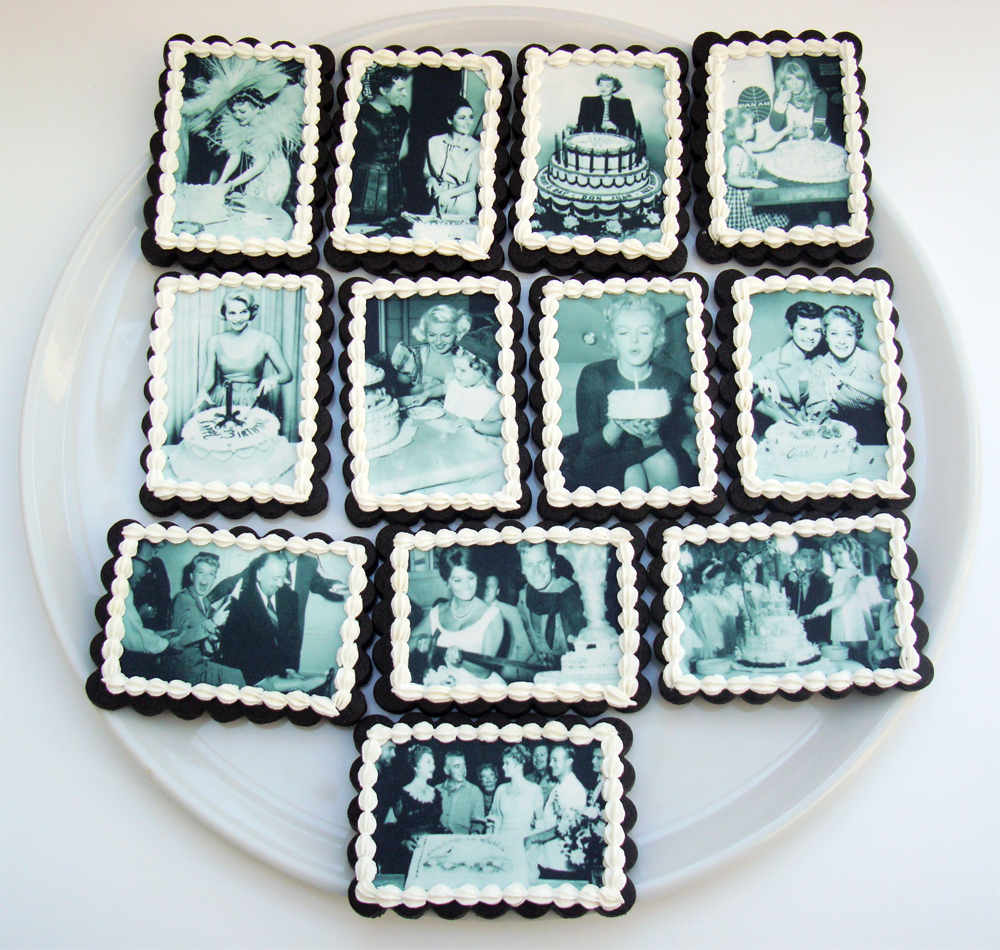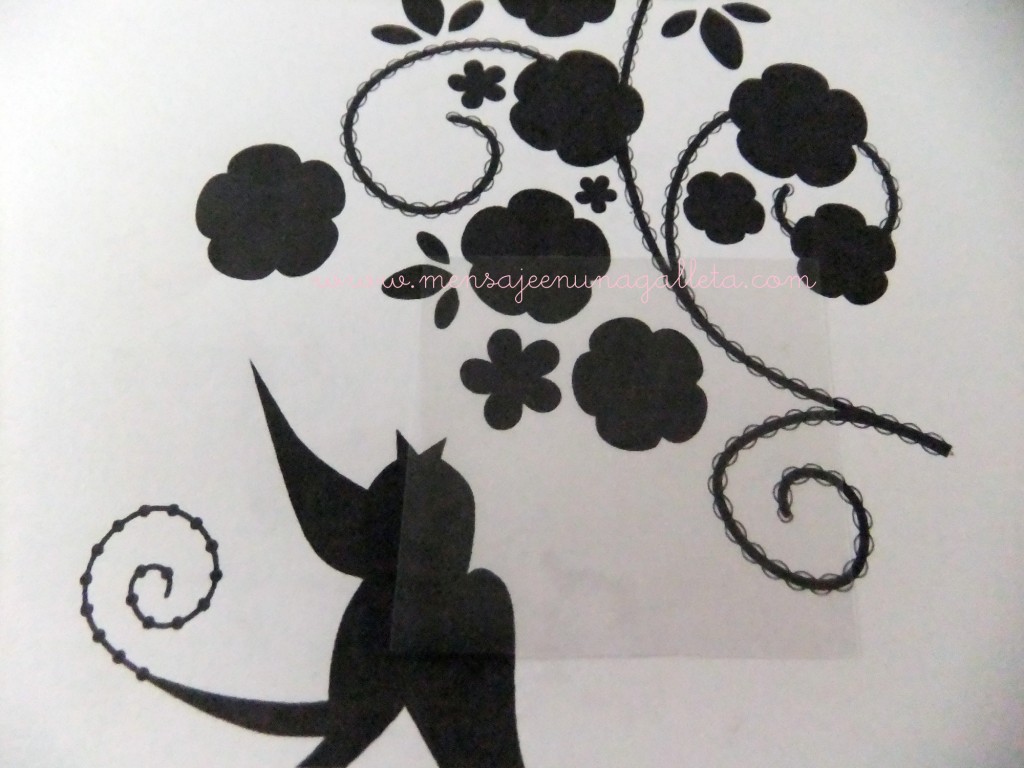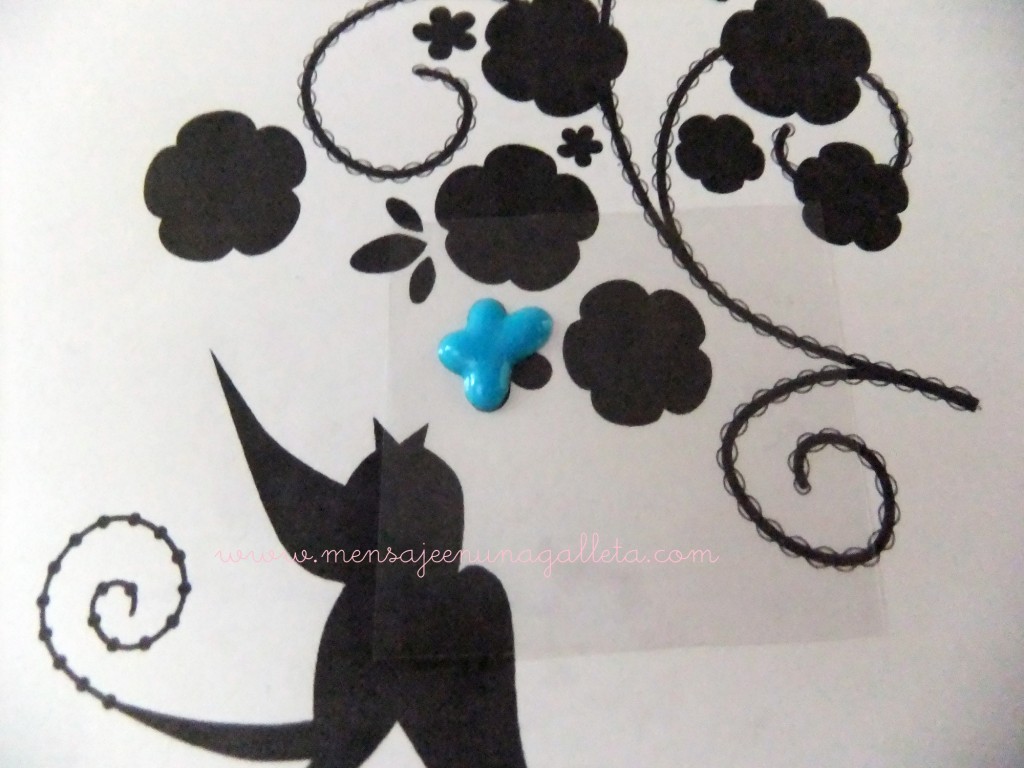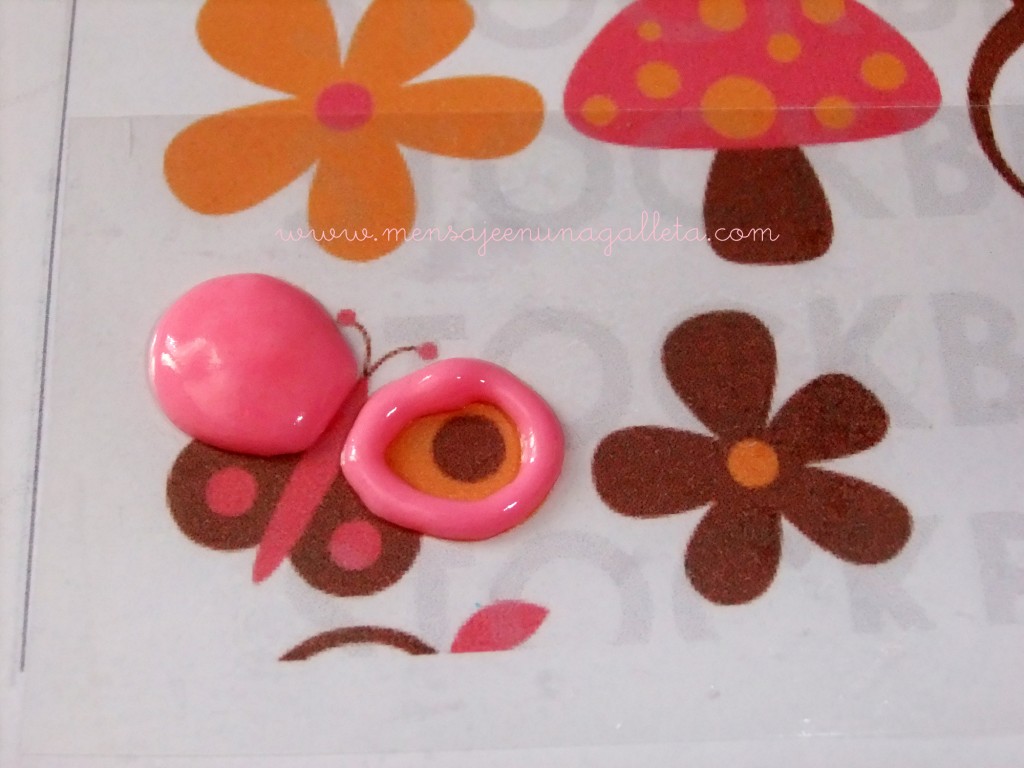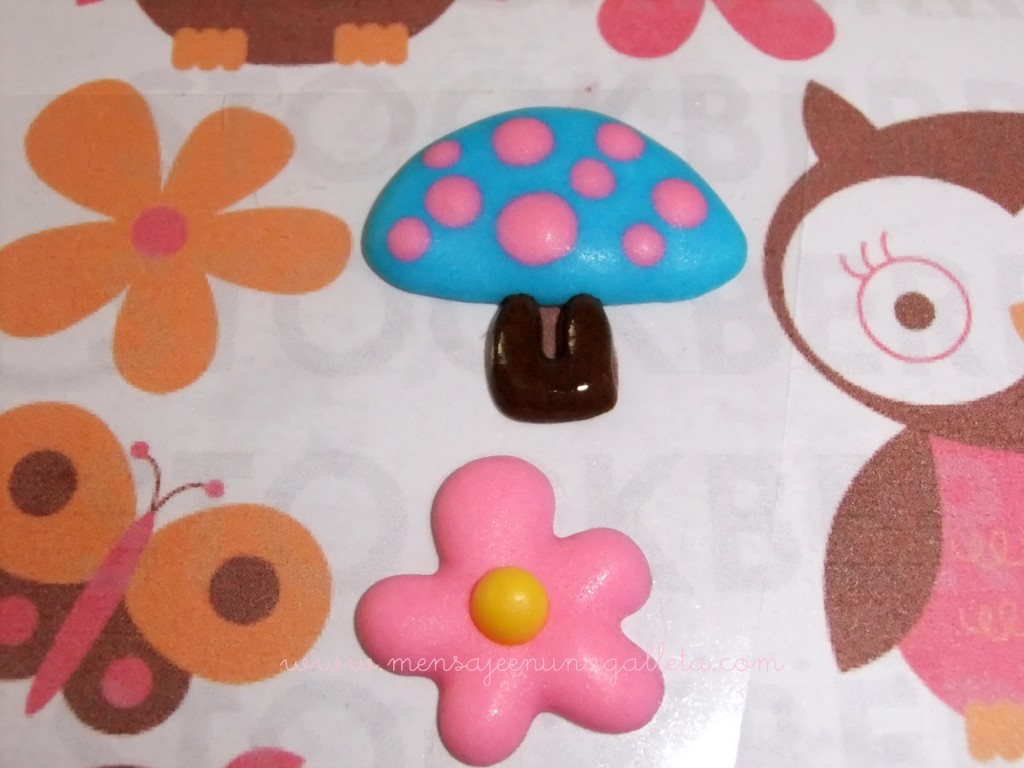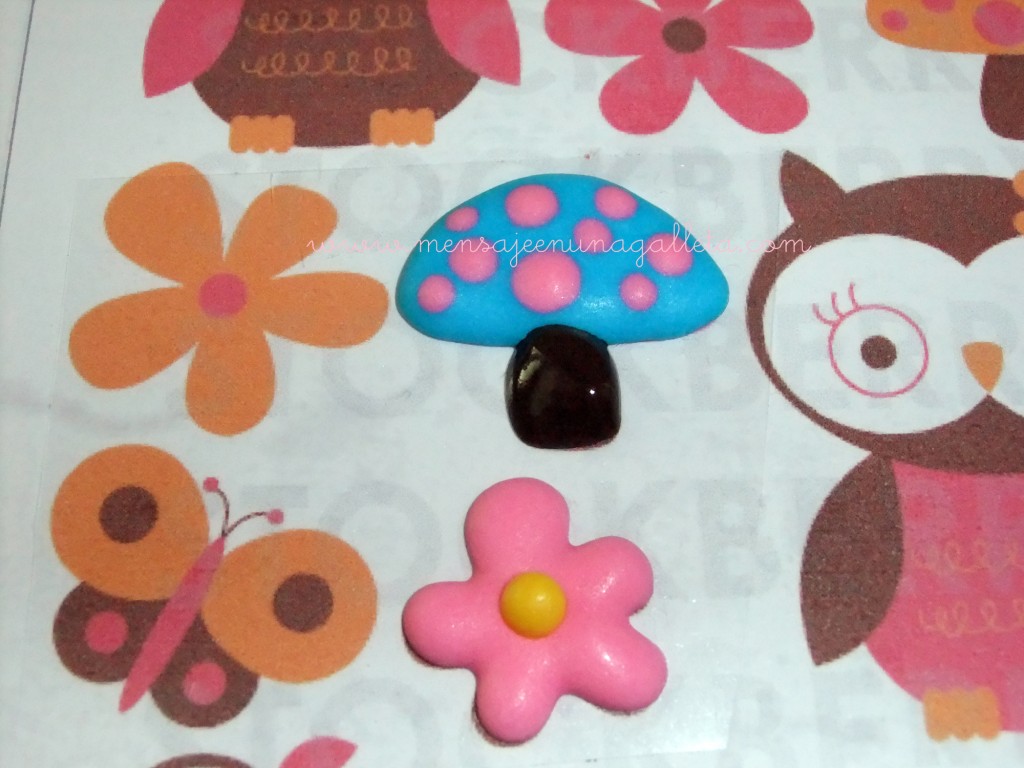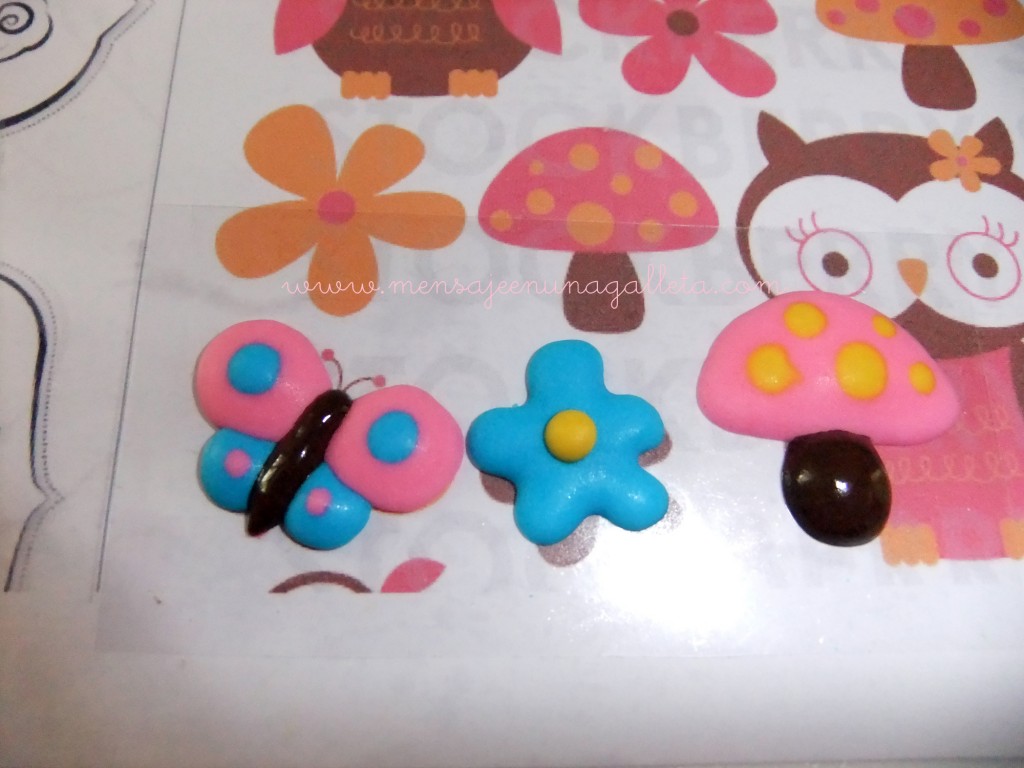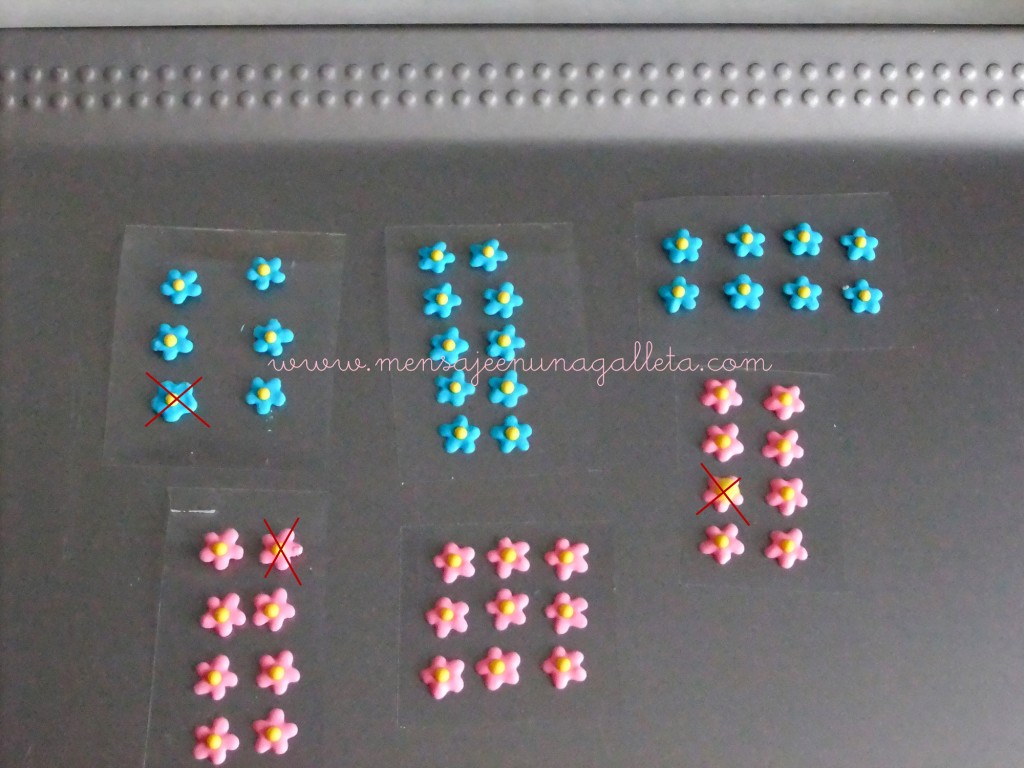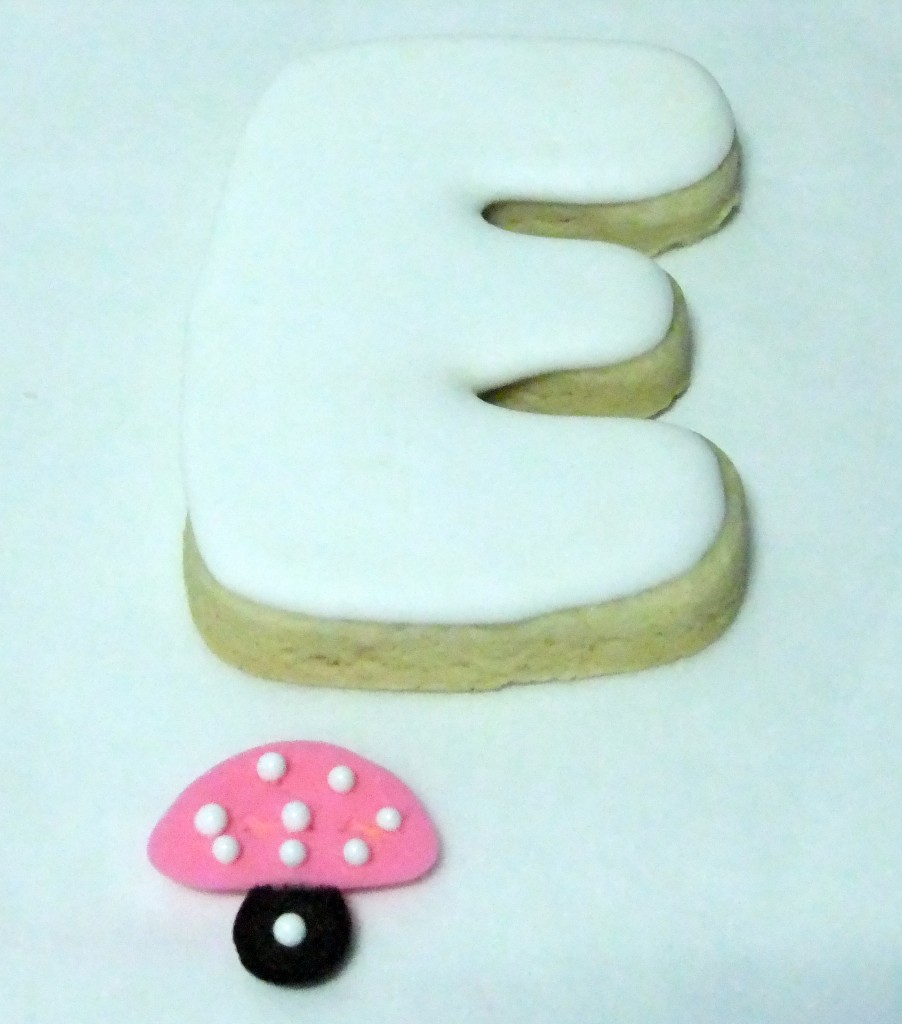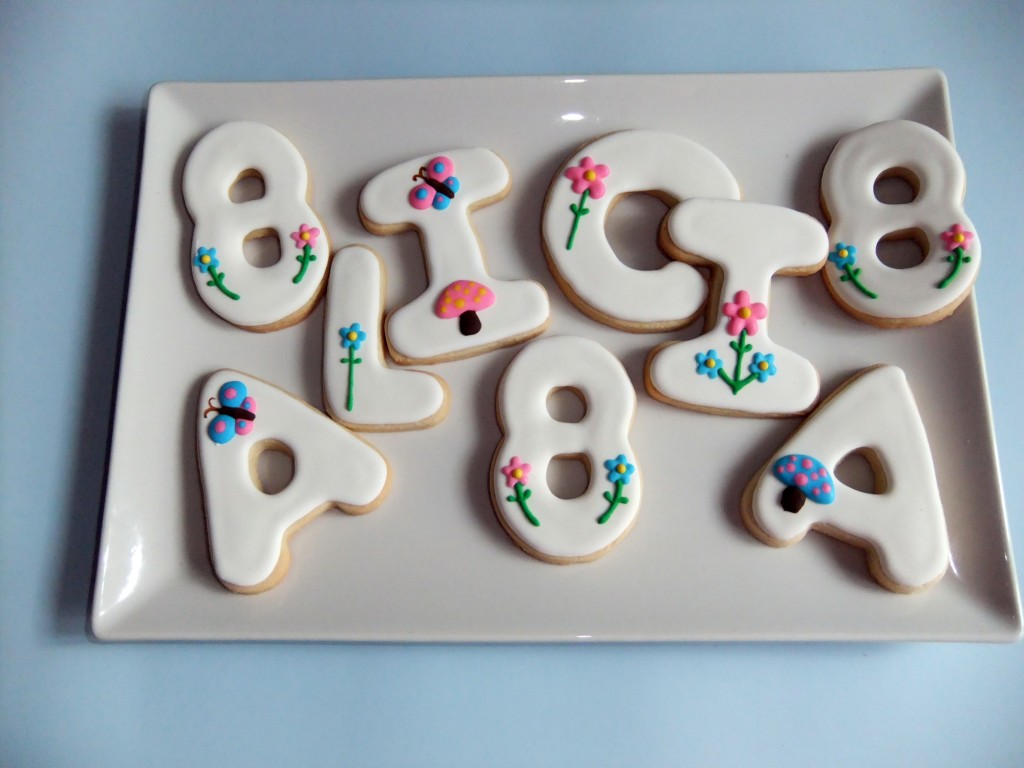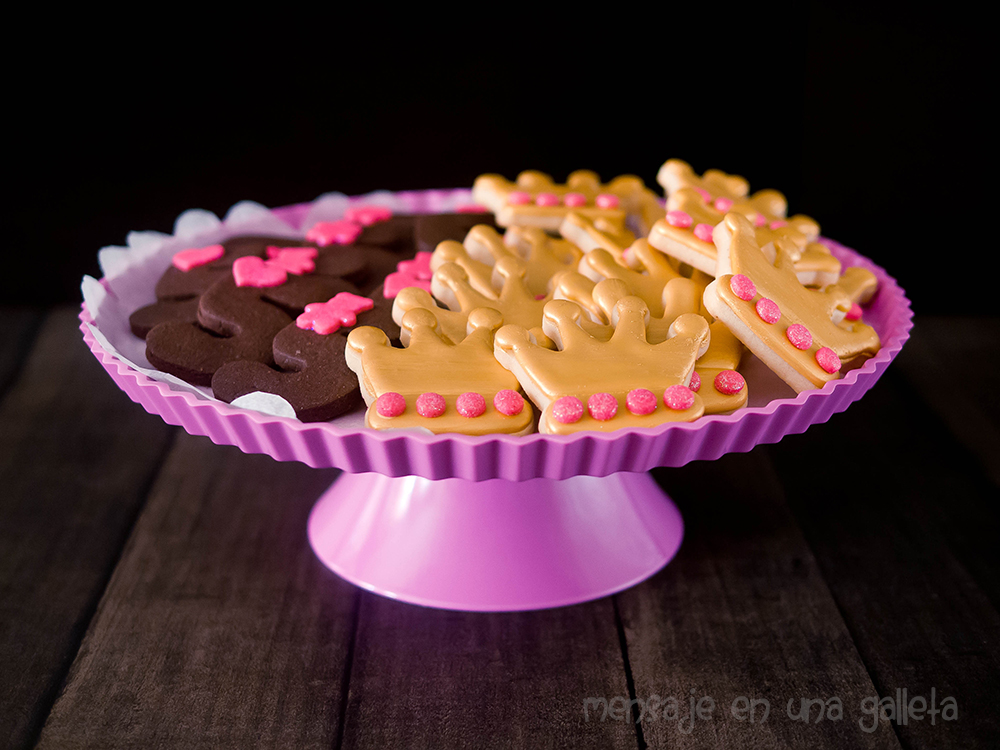
Hace dos años adapté una receta buenísima. Quité un ingrediente, añadí otro, ajusté los demás y por supuesto cuando la publiqué cité a la autora. La receta se extendió como la pólvora y me alegré muchísimo, porque eran unas galletas tan irresistibles que la población española al completo engordó haciéndome parecer a mí más delgada. Me alegré a pesar de venir de una familia en la que las recetas se guardan con celo, ¡soy la oveja negra! Lo que me gustó un poco menos fue que unas pocas personas copiaron mi receta exacta punto por punto, coma por coma, falta de ortografía por falta de ortografía y citaron como fuente a Georganne y ni una palabra de Mensaje en una galleta. Y no es que pretenda que el ciberespacio haga lo mismo que yo, cada cual es libre de mostrar u ocultar el camino por el que llega la inspiración, pero si nombras una receta original y se la ofreces a tus lectores totalmente transformada quizá alguien puede pensar que eres tú el que se ha pasado tardes enteras con la nariz pegada al horno.
Aquella receta una vez publicada no dejó de transformarse en mi cocina, más oscura, menos dulce, más aromática. Hace un par de meses dejó de hacerlo, se negó a seguir cambiando. Así que he tenido que ponerle nombre: “Receta definitiva de galletas de chocolate”. Y es definitiva porque sirve para que el chico que te gusta se enamore perdidamente de ti, o y esto es casi peor, para que se te llene la casa de vecinas cada vez que el aroma se escapa por el rellano.
Ingredientes
– 275 gramos de azúcar integral de caña de extraordinaria calidad (*) molido muy fino.
– 250 gramos de mantequilla, la barra entera, lo cual es cómodo.
– Vainilla, toda la que puedas pagar, yo le estoy poniendo una cucharada, 15 ml, de buena vainilla en pasta variedad Bourbon.
– ½ cucharita de sal, no es opcional.
– 85 gramos de cacao puro en polvo Valor.
– 2 huevos ecológicos pequeños, si no son ecológicos, tienen que seguir siendo pequeños.
– Harina 450 gramos
(*) Después de que en un par de ocasiones me diesen gato por liebre con el azúcar moscabado, ahora compro el azúcar en el supermercado del corte inglés, uno que viene en bolsa de plástico y pone azúcar integral moreno de caña, de la marca Special line, no pone moscabado. Pero como os decía he comprado otros etiquetados como tal y que no lo eran, que se secaban, y se ponían como una piedra, porque eran azúcar refinado teñido con melaza. Y esta receta necesita azúcar “salvaje”, lo menos procesado posible. El azúcar refinado no tiene sabor, este sí, fuerte, denso y un poco amargo.
Yo lo muelo con la thermomix, y confieso que para una superficie completamente lisa debería molerlo más, pero me encanta el punto crujiente que le dan los granitos que se salvan.
¿Puedo usar azúcar blanquilla molida? ¿Puedo ponerles azúcar glasé? Por supuesto, saldrán estupendas también, solo perderán el punto extra de sabor que les aporta este tipo de azúcar.
Elaboración
Muelo el azúcar, le añado la mantequilla en cuadraditos, ni siquiera hace falta que esté a temperatura ambiente, mezclo, añado los huevos, la vainilla y la sal, mezclo, añado el cacao mezclo. Destapo la thermomix, meto la nariz y me contengo para no comerme la mezcla a cucharadas, añado la mitad de la harina, mezclo, la otra mitad, mezclo.
Pongo la masa sobre un tapete enharinado y amaso y amaso. Cuando la masa cambia de textura y deja de ser pegajosa, la extiendo dándole palmaditas hasta alcanzar más o menos el doble del grosor al que la voy a estirar, la enfrío hasta que se endurece.
La estiro con el rodillo cuando está muy dura, por dos razones:
- Razón número 1: para conseguir que la superficie de las galletas quede lisa.
- Razón número 2: para no tener que pisar el gimnasio y que aun así en la piscina alguna vecina me pregunte si me he operado.
Volvemos a enfriar y cortamos las galletas. Horneamos a 180 grados siempre sin aire, los minutos de horno dependen del tamaño de las gallletas, y de tu gusto. Haz pruebas, esta masa se puede comer cruda o carbonizada y esta rica siempre.
Nota: La masa cruda también engorda.
Las figuritas son de masa de vainilla coloreada cubierta de purpurina rosa y las horneé encima de los cinco para que se pegasen.
Redoble de tambores, por fin llegó el momento de desvelar el secreto del dorado. Sabéis que a falta de rock’n’roll mi estilo como decoradora es pop, colores brillantes y luminosos, diseños geométricos. Y podéis buscar en mi pasado, no encontraréis ningún dorado. He preferido aclarar este punto antes de continuar.
El pasado miércoles mi hija pequeña cumplía 5 años y lo celebrábamos en Princelandia, local elegido a su gusto y que terminó siendo del mío, por las instalaciones, el trato inmejorable y la cara de felicidad con el que todas las niñas lo abandonaron. Pues bien María quería ese día regalarle galletas a sus amigas, entre las dos decidimos hacer un 5 por sus años y una corona por Princelandia. Mi idea original es que tanto los cincos como coronas fueses de chocolate con detalles de purpurina rosa, pero María se escandalizó: “¿Mamá coronas de chocolate? ¿Dónde has visto tú coronas de chocolate?” Intenté librarme y le pregunté: “¿Entonces les ponemos glasa rosa?” Me miró con ojos enfurecidos: “Mamá las coronas de las princesas son de oro”. De esta forma comenzó la búsqueda de la piedra filosofal, literalmente, la transmutación de las galletas de oro. Con la dificultad añadida de que era sábado por la noche.
Lo único que tenía comestible y dorado en mi casa era Metallic Golden Sands de Rainbow Dust, esos polvitos dorados que compramos todas y que después no sabemos cómo usar. Necesitaba mezclarlo con algo antes de aplicarlos. Quería que las coronas brillasen, mucho, que no presentasen el aspecto rugoso típico de los dorados en las galletas, y por si fuera poco no manchasen las bolsitas de celofán en las que las iba a empaquetar. Revisé todo lo publicado por Haniela’s y Sweetambs, y lo más parecido al oro pasaba por el alcohol, y llamadme excéntrica, pero por mucho que se evapore, añadir vodka de alta graduación a algo que van a comer niñas de 5 años, no me pareció una opción.
Ya lo sabéis, encontré la manera. Dentro vídeo:
La solución es sencillísima. El spray CLEAR de PME que usamos cuando queremos que la glasa brille, es el “disolvente” ideal. Para fabricar pintura dorada pulverizamos el spray cuatro o cinco veces sobre en un cuenco de cristal, obtenemos un poquito de líquido a este líquido le añadimos los polvitos dorados y removemos, enseguida tendremos la mezcla preparada para aplicar con un pincel. Cunde muchísimo, nosotras pintamos 25 coronas con casi nada. Vamos añadiendo más dorado o más spray según lo necesitemos. Una advertencia la primera vez es muy importe pulverizar sobre el cuenco vacío, porque si lo haces sobre el polvo dorado la expresión ”intenso fulgor” se quedará corta para describir como brilla tu cara.
Otra ventaja: Se seca inmediatamente.
Es recomendable usar una glasa teñida de un color con vocación de dorado, yo utilicé marrón, amarillo e ivory para conseguir este tono:
Como siempre muchísimas gracias a la Reynolds por hacerme sonar tan bien en inglés.
Una última foto:
Un beso gordo, Miriam G.
Two years ago I adapted a very good recipe. I left an ingredient here, I add another one, I adjusted the rest, and of course, when I posted it, I cited the author. That recipe spread quickly and I was very happy about it, because those cookies were so irresistible that the whole Spanish population gained weight, making me look thinner. I was happy even though I come from a family where recipes are kept very secretly. I’m the black sheep!. What I didn’t like so much was that some people copied my recipe exactly like I wrote it, point-by-point, comma-by-comma, spelling mistakes included and cited Georganne as the source. Not a word about Mensaje en una galleta. It’s not that I want the cyber space to do the same I do; everybody is free to show or hide the road through which they get their inspiration from, but if in a post you mention an original recipe which you offer to your readers completely modified, maybe someone may think that it’s you the one who spent several afternoons with your nose stuck to the oven window.
Once that recipe was posted, it kept changing in my kitchen, darker, not so sweet, more aromatic. A couple of months ago, it refused to change anymore, so I had to give it a name: ‘The definitive chocolate cookies recipe’. And it is definitive, the final recipe, because you can use it to make the boy you like fall desperately in love with you, or (this is even worse), to get your house full of neighbors when the smell from your house reaches the stair landing.
Ingredients:
– 275 grams of an extraordinary quality whole can sugar (*) finely ground.
– 250 grams of butter, the whole stick, which is convenient.
– Vanilla, all that you can pay. I am using a tablespoon, 15 ml, of a good Bourbon vanilla paste.
– ½ teaspoon of salt. Not optional.
-85 grams of Valor pure cocoa powder.
– 2 organic eggs, size S, if they are not organic, they still need to be small.
– 450 grams of flour
After having had the wool pulled over my eyes with Muscovado sugar, now I buy the sugar in the supermarket of El Corte Inglés, it comes in a plastic back where it says ‘whole cane sugar’. The brand is Special Line. You can’t read Muscovado anywhere. But as I said, I have bought some other labeled as such and they were not, the sugar got dry, hard as a stone because it was refined sugar dyed with molasses. Refined sugar is tasteless, whole cane sugar has a strong and dense flavor, a bit bitter.
I grind the sugar using the Thermomix and I confess that in order to get a complete smooth surface in our cookies I should grind it more, but I do love the crunchy touch of the tiny grains that miss the grinder.
Can I use ground white sugar? Icing sugar? Of course, you will get great cookies too, they will only miss the extra taste of this specific type of sugar.
Elaboration:
I will tell you how I prepare them: I grind the sugar, add the butter in dices, it doesn’t even need to be at room temperature. Mix, add the eggs, vanilla and salt. Mix again, add the cocoa. Mix. I open the Thermomix, stick my nose in it and I refrain myself from eating the mixture by the spoonful. Add half of the flour, mix, and add the other half. Mix again.
I put the dough on a floured surface and knead and knead. When the dough changes its texture and stops being sticky, I extend it patting it until I get more or less double the thickness I will want for my cookies. Then I cool it until it hardens. I roll it out when it is very hard for two reasons:
- Reason 1: in order to get cookies with a smooth surface.
- Reason 2: so I do not need to go to a gym and even then, have some neighbor asking me in the swimming pool if I have had any surgery at all.
After rolling out our dough, we cool it again and then cut the cookies. Bake at 180ºC, no fan, the minutes in the oven depend on the cookie size, and on your personal preferences. Test, this dough can be eaten raw or even burnt. It’s always nice.
Note: raw dough also does fatten.
The little figures are made with colored vanilla dough covered in pink glitter and baked on top of the ‘fives’ so they stick to each other.
Drum rolls, the moment for unveiling the secret of the golden color has come. You know that in the absence of rock’n’roll, my style as a decorator is pop, brilliant and shiny colors, geometric designs. And you can search in the depths of my past, you will not find any golden color. I have decided to make this point very clear from the start, before continuing.
Last Wednesday my youngest daughter turned 5 and we celebrated it in Princelandia, a place of her liking and which ended up also being of mine, because of the premises, the unbeateable service and the faces of happiness of all the girls when they left it. María wanted to give some cookies to her friends on that day, so between the two of us we decided to make a 5 for her age and a crown for celebrating her birthday in Princelandia. Mi original idea was to make both the 5s and the crowns as chocolate cookies with pink glitter details, but María was scandalized: ‘Mom, chocolate crowns? Where have you seen chocolate crowns?’ I tried to avoid her and asked her: ‘should we put some pink royal icing then?’. She looked at me, her eyes enraged: ‘Mom, princesses’ crowns are golden’. This way the search for the philosopher’s stone began, to be more precise, the transmutation of the golden cookies. With the added difficulty that it was Saturday night.
The only golden and edible thing I had around the house was Metallic Golden Sands from Rainbow Dust, that golden dust we all buy and later on we do not know how to use. I needed to mix it with something else before applying it. I wanted the crowns to shine, a lot, I didn’t want them to have the typical rough look of the usual golden cookies, and I also wanted them not to stain the cello bags I was going to package them in. I revised everything that Haniela’s and Sweetambs had published about it and the closest thing to golden color involved alcohol, and you can call me eccentric, but no matter how much it evaporates, to add high graduation vodka to something that a group of 5 years old girls is going to eat, didn’t seem like an option to me.
Now you know. I found the way. Video.
The solution is extremely easy. The PME spray that we use when we want our royal icing to shine is the ideal ‘solvent’. To make golden paint we spray that product four or five times on a glass bowl, so we obtain a bit of liquid, then we add to it some of the golden dust and stir. In no time we will get our mixture ready to apply with a brush. It goes a long way; we painted 25 crowns with almost nothing. We just have to add more spray or dust according to our needs. Just a little warning: the first time is very important to spray on an empty bowl, if you do it on the golden dust, the expression ‘intense glow’ will fall short to describe how your face will shine.
Another advantage: it dries immediately.
We recommend to use a royal icing already dyed in a color close to gold, I used brown, yellow and ivory in order to get this shade:
As usual, thanks Reynolds for making me sound so well in English.
And one last picture:
A big fat kiss, Miriam G.
